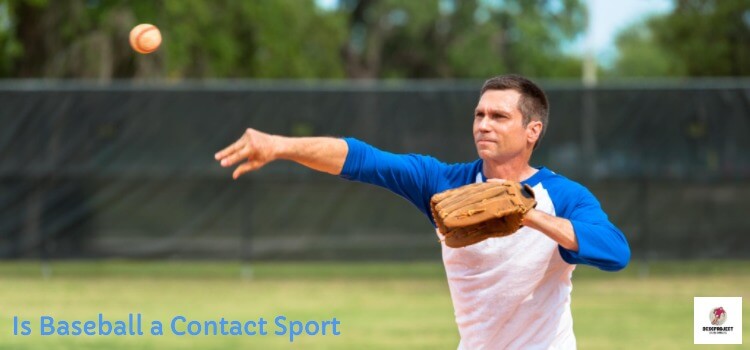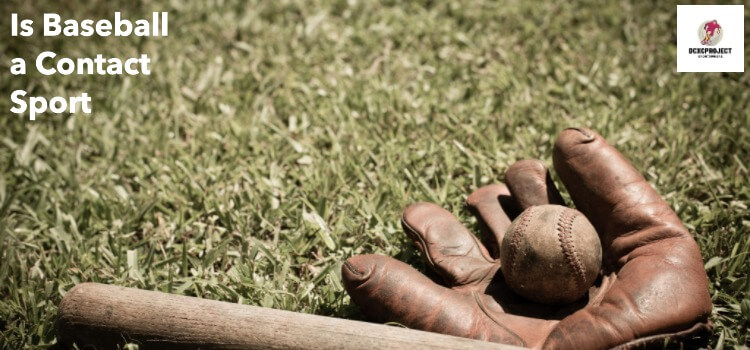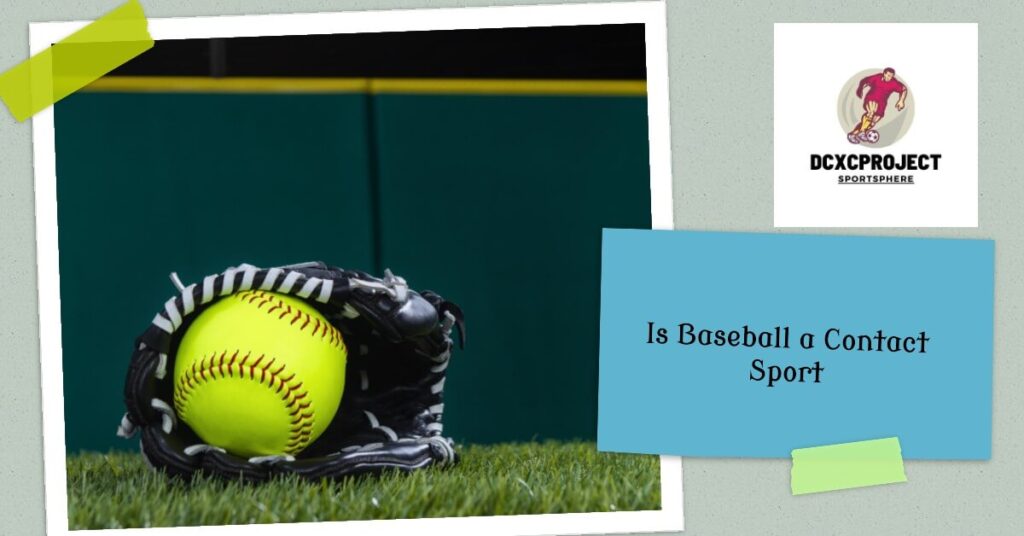Is Baseball a Contact Sport? is a question that often sparks debate among sports enthusiasts. As an avid follower and analyst of various sports, I delve into this topic, exploring the nuances that define contact sports.
Delving into the realm of sports, it’s clear that each has its own set of characteristics defining its level of physicality and contact. Baseball stands out as a classic American pastime, cherished for its strategic gameplay and the iconic crack of the bat.
The sport requires precision, teamwork, and a deep understanding of its complex rules. While accidental collisions can occur on the field, they are not a fundamental part of the game, distinguishing baseball from contact sports such as football or hockey. Fans and players alike admire the sport for its blend of mental and physical challenges, making it a beloved activity for participants of all ages. Whether enjoyed in a local park or a professional stadium, baseball’s unique spirit captures the essence of competitive yet non-contact sportsmanship.
Origins And Development Of Baseball As A Non-contact Sport
Steeping in the rich tapestry of American tradition, baseball, often dubbed America’s pastime, has captivated fans for over a century. Unlike its contact-sport counterparts, baseball stands out for its strategic and skill-based gameplay, where the clash of physical force takes a backseat to the precision of a pitch or the swiftness of a stolen base. Delving into its origins reveals a fascinating evolution from rudimentary stick-and-ball games to the regulated diamond we know today. This evolution underscores the game’s commitment to non-contact principles, ensuring its unique status in the world of sports.
At the heart of baseball’s inception lies a blend of English games like rounders and cricket. These early versions planted the seeds for baseball, but it was not until the 19th century that the sport began to crystalize. The Knickerbocker Rules, established in 1845 by Alexander Cartwright, laid down the foundational guidelines resembling the modern sport. Remarkably, the emphasis was on skills like throwing, hitting, and running over physical confrontations.
Integral to baseball’s identity is its deliberate avoidance of the physical collisions seen in football or rugby. From its infancy, baseball was seen as a gentleman’s game, where sportsmanship prevailed over aggression. Strikes, balls, and “tagging” out a runner stressed tactility minus the violence. Social perceptions of the time favored this non-contact approach, aligning the sport with values of refinement and civil conduct.
The trajectory of baseball toward enhanced safety is as steady as it is deliberate. The addition of masks for catchers and helmets for batters progressed in tandem with the sport’s growing popularity. By the mid-20th century, protective gear had become standard, with innovations like padded walls and strict rules against dangerous plays reinforcing baseball’s commitment to safety. Equipment and regulatory changes mirror a broader intention to uphold the integrity of a sport that thrives on strategy over skirmish.
Incidents And Controversies: Assessing The Level Of Contact In Baseball
The debate around whether baseball is a contact sport often overlooks the subtle yet significant incidences of contact inherent to the game. While not characterized by the constant, heavy collisions found in football or hockey, baseball does have its moments of physical altercations and controversial plays. An analysis of historical injury data, on-field collisions, and common misconceptions contributes to a clearer understanding of the contact element in baseball.
A detailed review of historical injury data brings forth intriguing insights into the risks players face. Baseball, like most sports, has evolved with regard to player safety, resulting in variations in injury trends over the years.
- Increased protective gear use
- Modified rules to reduce player-to-player contact
- Advancements in medical treatment and rehabilitation
Injury statistics often highlight the dichotomy between perceived safety and the realities of the sport’s physical demands. Consistent patterns appear when examining data on common baseball injuries ranging from pitcher’s elbow issues to collisions-related concussions.
High-profile incidents of player collisions resonate in discussions about the physical nature of baseball. Notorious examples such as home plate collisions have led to significant rule changes. These confrontations, while not a daily occurrence, demonstrate the potential for heavy contact, challenging the sport’s non-contact categorization.
| Year | Incident | Rule Change Impact |
|---|---|---|
| 2014 | Home plate collision rule | Reduced severe injuries |
| 2018 | Slide rule into second base | Lowered collision rates |
Occasional on-field skirmishes between players, though rare, also highlight the sport’s competitive intensity and potential for physical confrontation.
Common misconceptions may lead some to view baseball as a purely skill-based sport with little to no contact. In reality, the game’s fabric is woven with instances that demand a reassessment of this perspective.
- Brushbacks and hit-by-pitches
- Tag plays and base-running collisions
- Diving catches and plays at the wall
Each of these elements reflects a potential for contact that goes beyond the strategic placement of a ball or a swing of the bat. While the sport prioritizes skill and strategy, physical interactions are an undeniable component of the baseball experience. Dissecting these incidents reveals a nuanced contact layer within the sport’s competitive framework.

Analyzing The Statistics: Comparing Baseball To Recognized Contact Sports
Is baseball a contact sport? This question sparks debate among sports enthusiasts around the world. While it’s clear that baseball does not involve continuous physical contact between players like football or rugby, assessing the statistics can reveal how it measures up in terms of physicality and risks. This deep dive into the numbers aids in understanding baseball’s position on the contact sport spectrum.
Statistical Comparison With Traditional Contact Sports Like Football And Rugby
When discussing physicality, sports such as football and rugby often come to mind. Their inherent nature involves tackling, blocking, and a higher degree of player-to-player contact. To get a clear picture, let’s explore some pivotal statistics:
- Collision Frequency: In football and rugby, players engage in contact in almost every play of the game. In contrast, baseball features sporadic moments of contact, such as tagging a runner or the occasional home plate collision.
- Force of Impact: The tackles in football and scrums in rugby can exert significant force, contributing to those sports’ high-impact nature. Although less frequent, baseball’s contact can also be forceful, potentially leading to injuries.
Evaluation Of Injury Rates And Severity In Baseball Versus Contact Sports
The relative safety of baseball compared to full-contact sports can be partially gauged through injury rates and severity. A detailed examination tells us:
| Sport | Average Injuries per 1,000 Athlete Exposures | Common Injury Types |
|---|---|---|
| Baseball | 1.6 | Strains, sprains, contusions |
| Football | 8.1 | Concussions, sprains, fractures |
| Rugby | 15.2 | Concussions, dislocations, fractures |
Baseball’s injury rates are markedly lower than those in football and rugby. However, while less frequent, baseball injuries can still be severe, impacting players’ career longevity.
Impact Of Physical Contact On Player Performance And Longevity
Physical contact affects athletes’ performance and career duration across all sports. For baseball players, this often manifests differently:
- Risk of Concussion: Even with fewer contact scenarios, baseball players can suffer concussions from accidental collisions or being hit by a pitch, which can have serious implications for player health and performance.
- Chronic Wear: While not always associated with direct contact, the repetitive throwing and batting motions can lead to significant wear and tear on athletes’ bodies over time.
The impact of these factors is critical and can influence a baseball player’s ability to maintain peak form and extend their time playing the sport compared to their counterparts in more traditional contact sports.
Debunking Myths: Clarifying The Perceived Contact Aspect Of Baseball
When one thinks of contact sports, images of football tackles and rugby scrums might come to mind. Baseball, on the other hand, is often mistakenly lumped into this category due to its physical nature and the occasional collision. This misconception overlooks the true essence of the game—a spectacle of strategy, skill, and mental agility. In the following sections, we’ll tackle the myths head-on, explain the psychological and physiological impacts unique to non-contact sports, and dissect the nuanced elements that make baseball an intellectual, rather than a collision-centered, sport.
Common Misconceptions About The Level Of Contact In Baseball
Baseball is often viewed through a distorted lens, with some fans perceiving it as a contact sport due to instances like home plate collisions or tag plays. However, these events are rare and typically incidental rather than integral parts of the game. Here’s what many get wrong about baseball’s level of contact:
- The game is predominantly played in individualized actions—pitching, batting, and fielding—where contact is minimal or non-existent.
- Rules are in place specifically to reduce on-field contact, promoting player safety and sportsmanship.
- Physical altercations, such as bench-clearing brawls, are not a routine part of the game and carry penalties.
Exploring The Psychological And Physiological Effects Of Non-contact Sports
Non-contact sports like baseball require a different set of psychological and physiological capabilities. Without significant physical contact, players rely heavily on mental acuity, hand-eye coordination, and fine motor skills to succeed in a game where milliseconds and millimeters can determine the outcome. Highlights include:
| Mental Skills | Physical Skills |
|---|---|
| Concentration under pressure | Precision in timing and movement |
| Strategic thinking and decision-making | Stamina and agility to endure nine innings |
| Stress management and resilience | Coordination for hitting and fielding |
Dissecting The Elements Of Strategy And Skill In Baseball Without Relying On Physical Contact
The core components of baseball orbit around a cerebral axis, where strategy forms the foundation of every play. These elements, often invisible to the casual observer, are what differentiate baseball from traditional contact sports. Players and coaches must exhibit a chessmaster’s foresight, manipulating defensive alignments and predicting pitches, often in the pursuit of outsmarting their opponents rather than outmuscling them. Points to consider include:
- The nuanced chess game between pitcher and batter, where deception and predictive analytics reign supreme.
- The meticulous design of plays, from hit-and-runs to sacrifice bunts, which rely on tactical acumen.
- Defensive shifts and positioning that are the result of intricate scouting reports and in-game management.

Frequently Asked Questions Of Is Baseball A Contact Sport
Is Baseball A Contact Or Non Contact Sport?
Baseball is generally considered a non-contact sport because players typically do not make deliberate physical contact with each other like in sports such as football or hockey.
What Is Considered A Contact Sport?
A contact sport involves physical contact between players as part of the game, such as football, rugby, and boxing. These sports usually include tackling, collisions, or other forms of physical interaction.
Is Nba Basketball A Contact Sport?
Yes, NBA basketball qualifies as a contact sport due to physical interactions like bumping, pushing, and defending between players during games.
What Is A Non-Contact Sport?
A non-contact sport is an activity where players avoid physical contact with each other. Sports like swimming, golf, and tennis fall into this category, emphasizing skill over physical interaction.
Conclusion
Understanding the nature of baseball helps redefine what we consider a contact sport. While it eschews continual physical clashes typical of football or hockey, baseball’s inherent risks and moments of contact are undeniable. Acknowledge its unique blend of strategy, skill, and occasional physicality, as this timeless game continues to captivate fans worldwide.

